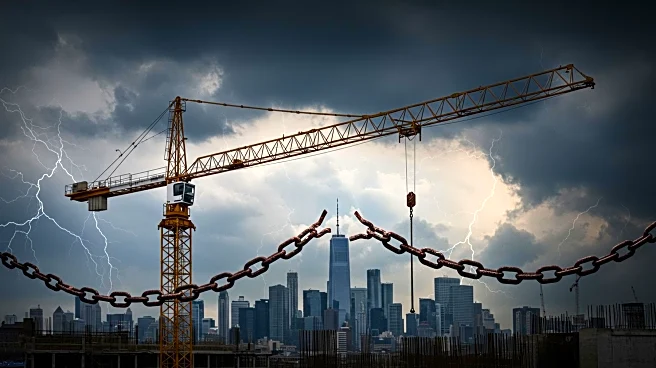What is the story about?
What's Happening?
The U.S. rental market has experienced a decline in rent prices for the 24th consecutive month, with the median asking rent for 0-2 bedroom properties in the 50 largest metropolitan areas falling to $1,712 in July. This represents a 2.5% decrease compared to the previous year. Despite this trend, new tariffs on materials such as aluminum and steel, coupled with rising construction costs, are causing a significant pullback in multifamily development. In June 2025, multifamily completions for buildings with two or more units dropped by 38.1% year-over-year, indicating potential future shortages in rental supply.
Why It's Important?
The ongoing decline in rent prices has provided renters with more financial flexibility, but the reduction in multifamily development could lead to a shortage of rental properties in the future. This situation may reverse the current trend, potentially increasing rent prices again. The impact of tariffs and construction costs is felt unevenly across the U.S., with the Midwest experiencing the steepest drop in completions. This could affect housing availability and affordability, particularly in regions already facing economic challenges.
What's Next?
If construction costs continue to rise and tariffs remain in place, developers may further reduce their investment in new rental properties. This could lead to a tighter rental market, with increased competition for available units and higher rent prices. Policymakers and industry stakeholders may need to address these challenges to ensure a stable and affordable rental market.
Beyond the Headlines
The reduction in multifamily development could have long-term implications for urban planning and housing policy. As cities grapple with housing shortages, there may be increased pressure to find alternative solutions, such as incentivizing affordable housing projects or revising zoning laws to accommodate more diverse housing options.
AI Generated Content
Do you find this article useful?













